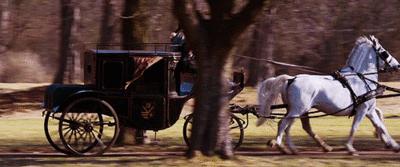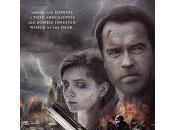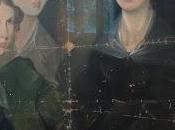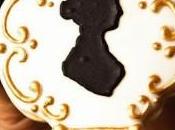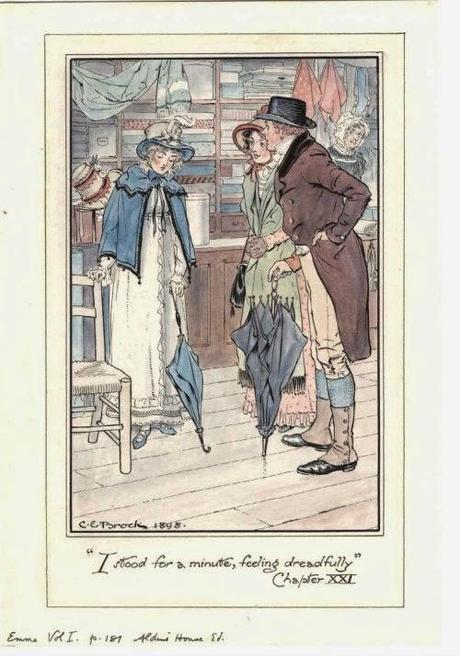
Pubblicati tra il 1811 ed il 1818 i capolavori letterari di Jane Austen riscossero già da subito un considerevole successo, ma si trattava di romanzi che, in quanto tali, non venivano illustrati, soprattutto per ragioni economiche, e quindi i loro protagonisti difficilmente avevano un volto se non nella fantasia di chi ne scorreva le righe con lo sguardo ...
La prima edizione illustrata dei romanzi della Austen è datata 1833 a cura dell'editore Richard Bentley:

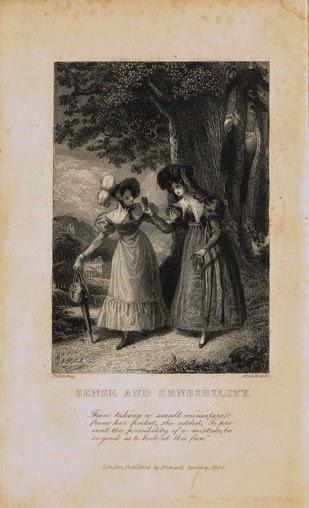
si tratta di illustrazioni in bianco e nero, al tempo sicuramente di prestigio, piccole stampe che immortalano alcune scene topiche della narrazione, i cui personaggi vestono gli abiti del tempo - il primo periodo vittoriano - ma fu solamente con gli inizi del XX secolo che Charles Edmund Brock ( 1870 - 1938 ) per primo ed in modo ancor oggi imprescindibile, diede vita con i propri acquerelli ai personaggi ed alle ambientazioni di questi romanzi tutt'ora connotati da piacevole attualità da che taluni sentimenti non subiscono il mutare dei tempi e delle mode.
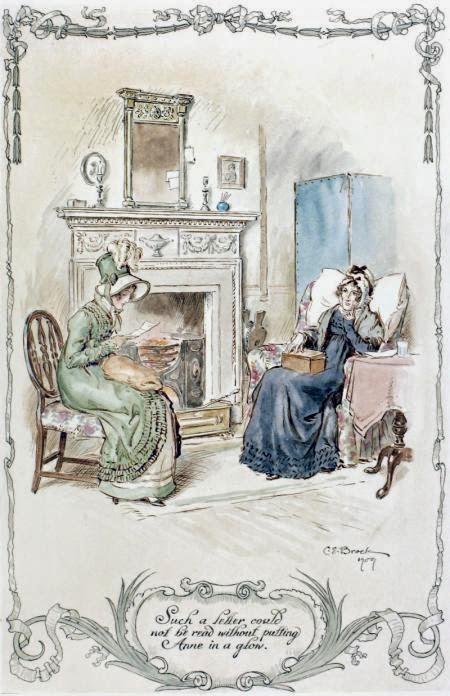 Persuasion
Persuasion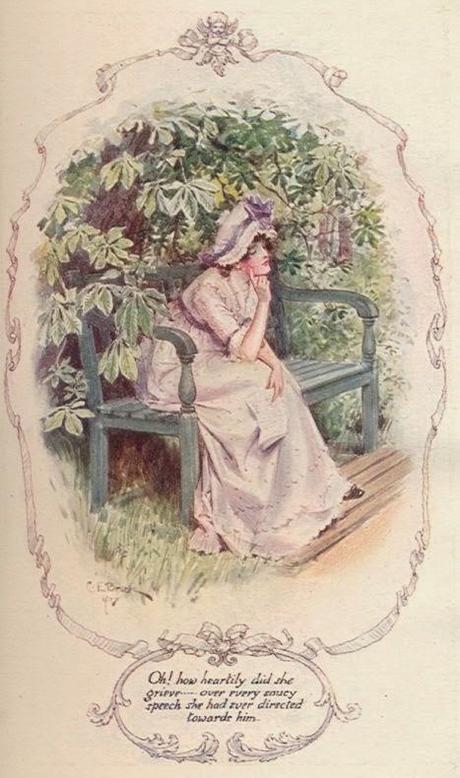 Pride and Prejudice
Pride and Prejudice Emma
Emma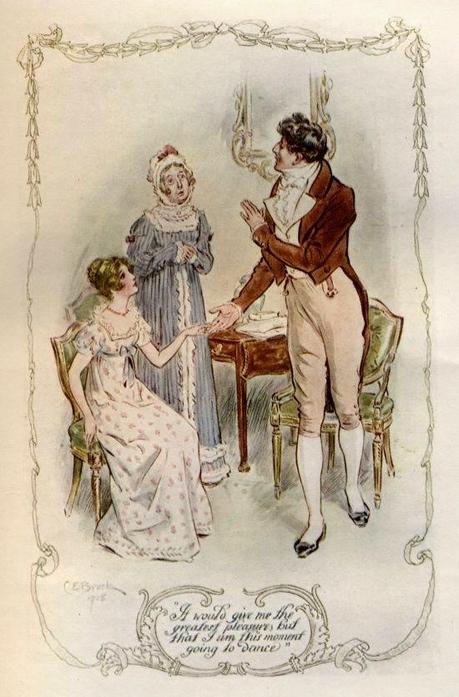 Mansfield Park
Mansfield Park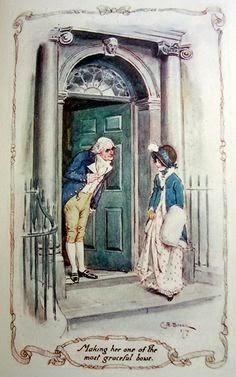 Northanger Abbey
Northanger Abbey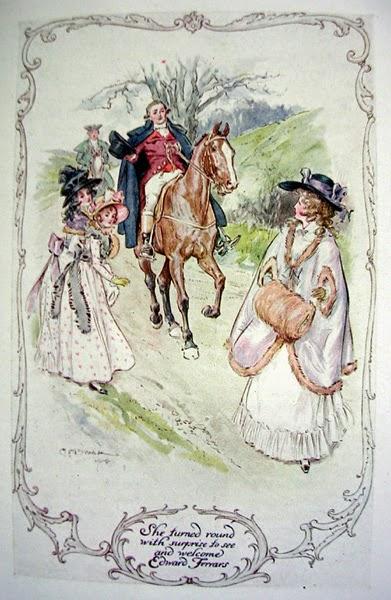 Sense and Sensibility
Sense and SensibilityRicostruendo un epoca descritta dall'autrice con meticolosa attenzione, rispettoso anche dei più piccoli dettagli della moda e del costume dell'epoca Regency, Charles E.Brock fu in grado di dare mirabilmente espressione figurativa ai grandi capolavori senza tempo di Jane Austen, quasi come se dello scritto le sue immagini divenissero il necessario complemento e compimento.

Brock era nato il 5 febbraio del 1870 a Holloway, Londra. Quando era ancora fanciullo la sua famiglia si stabilì a Cambridge dove egli studiò arte presso lo scultore Henry Wiles; all'età di vent'anni, nel 1890, gli venne commissionato il primo lavoro come illustratore e gli venne presto riconosciuto il dovuto successo quale collaboratore per autori celebri come Jonathan Swift
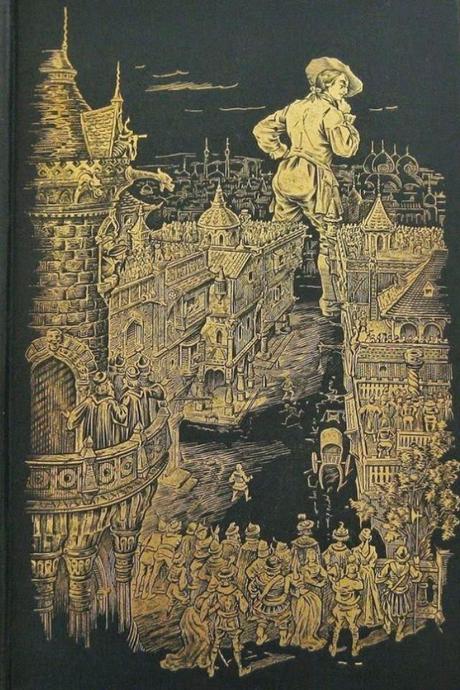 Johnatan Swift, The Gulliver's Travels, 1894William Thackeray
Johnatan Swift, The Gulliver's Travels, 1894William Thackeray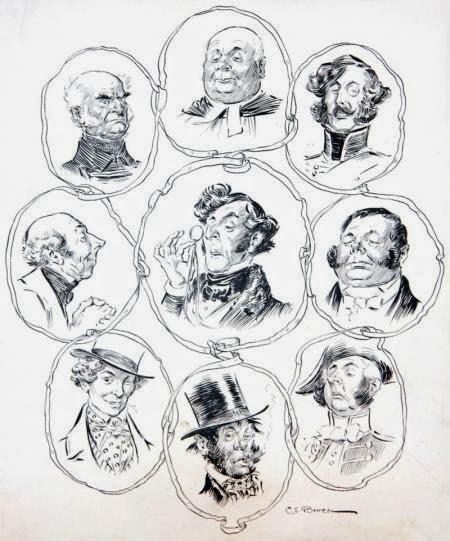 William Makepeace Thackeray, The Book of Snobs, 1903
William Makepeace Thackeray, The Book of Snobs, 1903Charles Dickens,
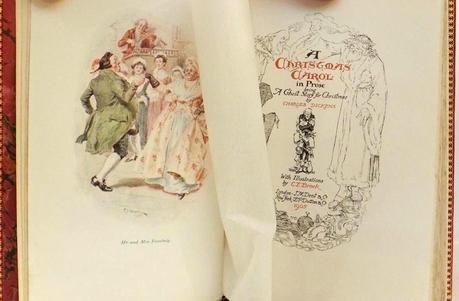 A Christmas Carol, 1905
A Christmas Carol, 1905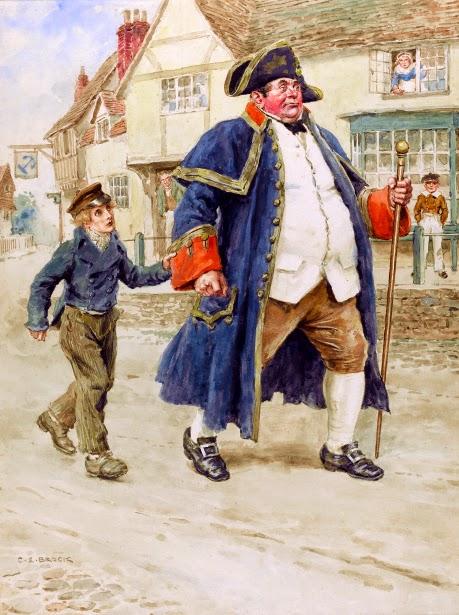 Oliver Twist
Oliver Twist
The Battle of Life - A love Story e George Eliot
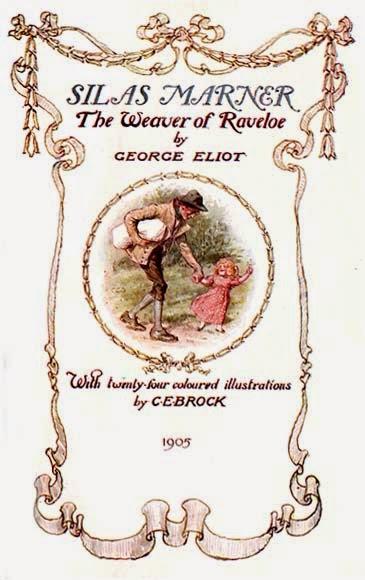 George Eliot, Silas Marner, 1905Egli collaborò anche per numerose riviste quali The Quiver, The Strand Magazine e Pearsons.
George Eliot, Silas Marner, 1905Egli collaborò anche per numerose riviste quali The Quiver, The Strand Magazine e Pearsons.Insieme con i fratelli Richard ed Henry Matthew, anch'essi artisti, aveva uno studio a Cambridge colmato di vari cimeli, oggetti d'antiquariato, mobili, e una collezione di costumi. Possedeva una vasta collezione di stampe di abiti di epoca Regency e figurini di moda, e ne aveva alcuni appositamente realizzati come esempi per alcuni costumi: tutto ciò, insieme con la posa di alcuni membri della famiglia, diede vita ai capolavori che conosciamo.
Ecco perchè riuscì ad entrare così compiutamente nel mondo di Jane Austen, perchè in realtà questo già gli apparteneva.
Al suo nome saranno legati anche altri romanzi illustrati, tra i quali Cranford di Elisabeth Gaskell,
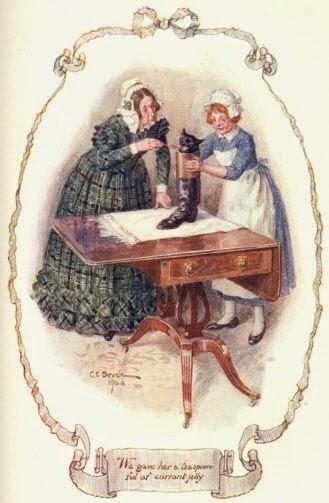
The Vicar of Wakefield di Oliver Goldsmith ( 1898 ),
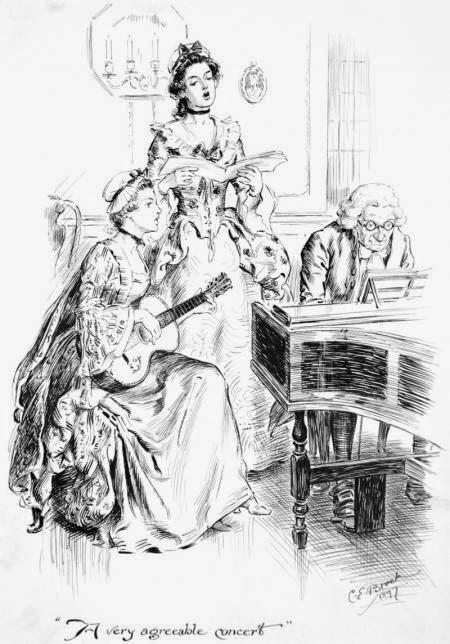
Our Village di Mary Russel Mitford

ed altri romanzi per ragazzi, da Little Lord Fauntleroy di Frances Hodgson Burnett
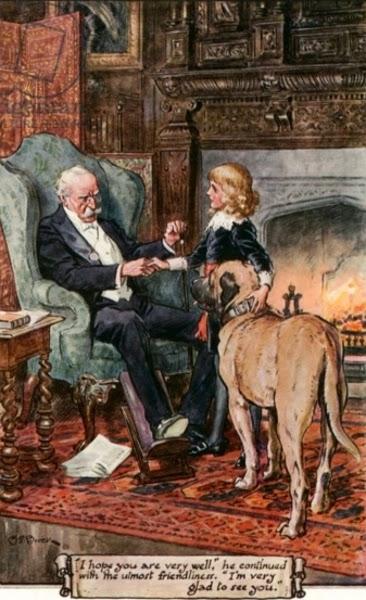
a The Cockoo Clock di Mrs Molesworth
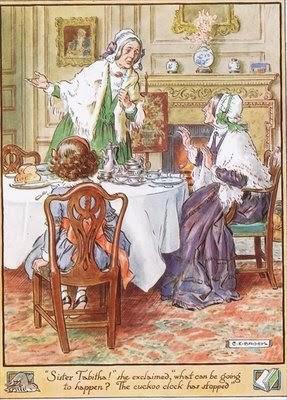
e storie appartenenti alla mitologia ed alla tradizione biblica; insomma, si potrebbe dire che con Charles E.Brock, in pieno periodo vittoriano, presero vita i più famosi romanzi d'appendice e racconti conosciuti al tempo, anche se va ricordato che il suo nome è e rimane di certo principalmente legato a quello di Jane Austen.
Il nostro viaggio tra queste splendide immagini che ci appaiono, ciascuna, come dei piccoli, dettagliati dipinti termina qui e nella speranza di avervi intrattenuti piacevolmente vi auguro con tutto il cuore ogni bene.
A presto ♥
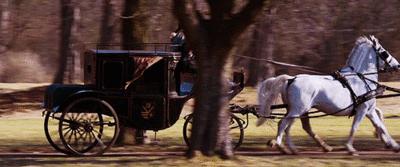


- picture 1
Published between 1811 and 1818, the Jane Austen's literary masterpieces met soon with a considerable success, but they were novels that, as such, weren't usually illustrated, mainly for economic reasons, and then their protagonists hardly had a face except in the imagination of those who, with their eyes, ran their lines ...
The first illustrated edition of Austen's novels is dated 1833 by the publisher Richard Bentley:
- picture 2
- picture 3
these are illustrations in black and white, certainly prestigious, small prints that immortalize some topical scenes of the narrative, whose characters wear the clothes of the time - the early Victorian period - but it was only with the beginning of the XXth century that Charles Edmund Brock (1870 - 1938) as first, and still so essential, gives life, with his watercolors, to the protagonists and the settings of these novels still characterized by pleasant actuallity as certain feelings aren't affected by the changing of times and fashions.
- picture 4 - Persuasion
- picture 5 - Pride and Prejudice
- picture 6 - Emma
- picture 7 - Mansfield Park
- picture 8 - Northanger Abbey
- picture 9 - Sense and Sensibility
Reconstructing a period described by the authoress with meticulous attention, respectful of even the smallest details of the fashion and costume of the Regency era, Charles E.Brock was able to give wonderfully figurative expression to the great masterpieces of Jane Austen's timeless works, almost like if of the script his images would become a necessary complement and fulfillment.
- picture 10
Brock was born on February 5th, 1870 in Holloway, London. When he was still a child his family moved to Cambridge where he studied art by the sculptor Henry Wiles; at the age of twenty, in 1890, he was commissioned a first job as an illustrator and was soon recognized as a co-worker to famous authors such as Jonathan Swift
- picture 11 - Johnatan Swift, The Gulliver's Travels, 1894
William Thackeray
- picture 12 - William Makepeace Thackeray, The Book of Snobs,1903
Charles Dickens,
- picture 13 - A Christmas Carol, 1905
- picture 14 - Oliver Twist
- picture 15 - The Battle of Life - A love Story
and George Eliot
- picture 16 -George Eliot, Silas Marner, 1905
He also worked for several magazines such as The Quiver, The Strand Magazine, and Pearsons.
Together with his brothers Richard and Henry Matthew, also artists, he had a studio in Cambridge filled with various memorabilia, antiques, furniture, and a collection of costumes. He owned a large collection of prints of Regency era dresses and fashion plates, and had some specially made as examples for some costumes: everything, together with the laying of a few family members, gave birth to the masterpieces that we know.
That's why he was able to enter so completely into Jane Austen's world, because in reality this already belonged to him.
His name will be linked to other novels, including Cranford by Elizabeth Gaskell,
- picture 17
The Vicar of Wakefield by Oliver Goldsmith ( 1898 ),
- picture 18
Our Village by Mary Russel Mitford
- picture 19
and other novels for children, such as Frances Hodgson Burnett'sLittle Lord Fauntleroy
- picture 20
and Mrs Molesworth's The Cockoo Clock
- picture 21
and stories belonging to the mythology and biblical tradition; in short, we could say that Charles E.Brock, in full Victorian period, came to life the most famous serial novels and short stories known at the time, although it should be remembered that his name is and remains primarily linked, of certain, to that of Jane Austen.
Our journey through these beautiful images that appear, each, as a small, detailed painting, ends here and in the hope to have pleasantly entertained you, with all my heart I wish you all the best.
See you soon ♥
